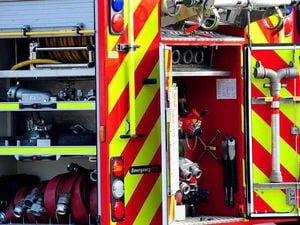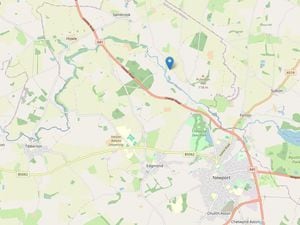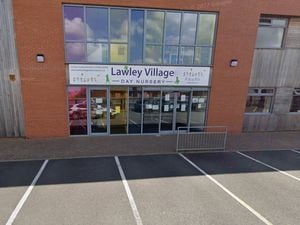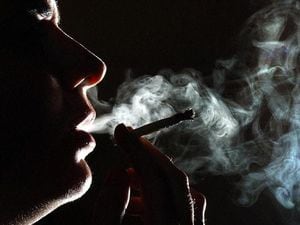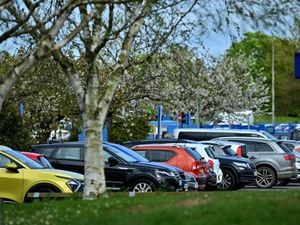General Election 2017: Key battlegrounds as the countdown begins
Theresa May's decision to call a snap election caught everyone off guard. Here Thom Kennedy looks at six key issues for voters in Shropshire and Mid Wales as the countdown to June 8 begins.
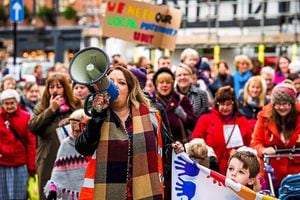
Standing front and centre in Shropshire during this election campaign will be health services.
The long-running saga over the Future Fit shake-up of hospitals in the county has proved deeply divisive, and is currently on hold.
As things stand, the most likely outcome appears to be the downgrading of A&E services at Telford's Princess Royal Hospital, with the Royal Shrewsbury Hospital becoming the county's main urgent care centre.
This is an issue which is resonating with local people, and candidates will need to demonstrate they are fighting to keep health services local.
In Telford in particular the matter is exercising the passions of local people, who will be looking for a sign that their MP shares their hopes for Telford-based 24-hour emergency care.
Almost 30,000 people have backed Telford & Wrekin Council's campaign to keep emergency services at the PRH, but big-hitters have also thrown their support behind the Shrewsbury hospital.
This is without doubt the hot-button topic facing politicians across Shropshire.
2. HOUSING
The population of Shropshire, like that of the rest of the world, is growing.
Over the next 20 years or so another 40,000 people are expected to be living in the county, and Telford is reportedly the fastest-growing town in the West Midlands.
Housing, then, is one of the most significant balancing acts that politicians of today face.
To satisfy all comers, they must ensure a sufficient supply of housing stock, prevent development in areas where it is unwelcome, and ensure young people are not being kept off the property ladder by spiralling prices.
Average property prices in the wider county recently tipped past the £200,000 mark for the first time, and while lower in Telford growth is outstripping the national average.
We can expect to see some hastily party published manifestos appearing in the next few weeks.
They will need to present clear and coherent plans that will demonstrate how to execute the delicate balancing act that will serve the needs of the growing population, while allowing Shropshire to retain its rural feel.
3. BREXIT
The issue of Brexit hangs over this election like impenetrable autumn clouds.
Leave votes outweighed remain votes in Telford by a margin of 56,649 to 32,954, while in Shropshire there were 104,166 votes cast in favour of leaving the EU and 78,987 favouring remaining.
Despite Theresa May's claims that there is national unity over the subject of Brexit, there remain people wedded to both sides of the pro and anti-EU arguments.
Brexit probably won't be an issue that defines seats in Shropshire, so much as it could affect margins. There is a sense in some quarters that this election could see votes no longer running along party lines, but being translated into Brexit sentiment.
Were that the case, there would be little sign of a significant change to Shropshire's political make-up.
Two Shropshire MPs – Philip Dunne and Mark Pritchard – campaigned in favour of Remaining in the EU, but then so did the Prime Minister Theresa May, who is now the most vocal exponent of Brexit.
4. ECONOMY
"It's the economy, stupid" – the words which inevitably hove into view whenever an election appears on the horizon.
Unlike the last two campaigns, the economy of the UK as a standalone issue has lost its potency as the core matter for debate.
Brexit and health are likely to dominate proceedings – but rest assured that underpinning every discussion will be the financial health of the country.
In Shropshire, that means jobs. It means inward investment, as has been repeatedly seen in Telford in recent months.
The number of people out of work in Shropshire and Telford & Wrekin has bumped around at a low level for more than a year now, and the ruling Conservative Party is sure to point to the record employment figures to argue that its stewardship of the economy is working.
Locally, candidates may turn their attentions to the quality of jobs, and how to retain young talent in Shropshire.
That will mean discussing inward investment deals such as Magna International and Polytec Group near Stafford Park in Telford, and investment in skills such as via the Marches Centre for Manufacturing & Technology which is being built in Bridgnorth.
5. TRANSPORT
Many of the issues that affected Shropshire's infrastructure at the last election remain just as pressing now.
HS2 is going ahead – so how will the county capitalise on the massive investment? Will it allow more trains to run into the county? Will it lead to an investment in rail electrification? Will it provide opportunities for civil engineering businesses?
Will any parties promise major upgrades of roads around the county? In Shropshire there are at least four road projects which could significantly boost the county's economy and free up development land.
Shrewsbury could build thousands of homes and open up countless acres of business development land were the long-awaited North West Relief Road ever to come to fruition. An upgraded A5 could vastly improve safety between Shrewsbury and Wrexham – and is a pet project of North Shropshire MP Owen Paterson.
Improving the link between the M54 and the M6(Toll) is perhaps the most likely project to happen, and would aid access to the county.
From a safety perspective, the A49 would benefit from significant improvement. In the last five years, eight serious accidents have occurred at the stretch in Onibury, four serious and one fatal at Little Stretton and three serious and three fatal crashes have happened on the Dorrington stretch.
6. COUNCIL FUNDING
Local services remain a key issue for many people, whether it be relating to social care of simply picking up the bins.
But councils are seriously short of cash.
The leader of Shropshire Council, Malcolm Pate, has vowed to fight for additional funding for social care, and it is an issue which is likely to resonate in local communities – particularly in areas such as Shropshire which have an ageing population.
And some things to note on a national scale.
SCOTLAND
One of the first matters to come out of Scotland after Theresa May's announcement on Tuesday was the question of why the time is right for an election, but not a second independence referendum.
The outcome of the election north of the border could indicate what Scotland's long-term future is.
IMMIGRATION
Immigration is bound to come up on the doorstep. Polling suggests it was the decisive issue in last year's EU Referendum, and it is discussed at length in political debates.
But arguments around the issue have changed in the wake of the referendum.
Increasing pressure is being applied to the Government from business organisations demanding that they deliver clarity over the future of EU workers currently in the UK.
VOTER FATIGUE
The Scottish Referendum dominated the news cycle in 2014. In 2015 it was the General Election. Last year, the EU Referendum was unavoidable. Even before we get to the General Election there is the small matter of local council elections around the country.
The question this time is whether voters have the appetite for another significant national poll.
VOTING HABITS
Many people are uncertain over their relationship with the Labour Party.
Questions exist over the direction of the party, and its stance over Brexit.
The popular consensus is that this will be a landslide for the Conservative Party, and is as predictable as they come.
But there's no knowing what the European Union Referendum has done to influence voting habits.

